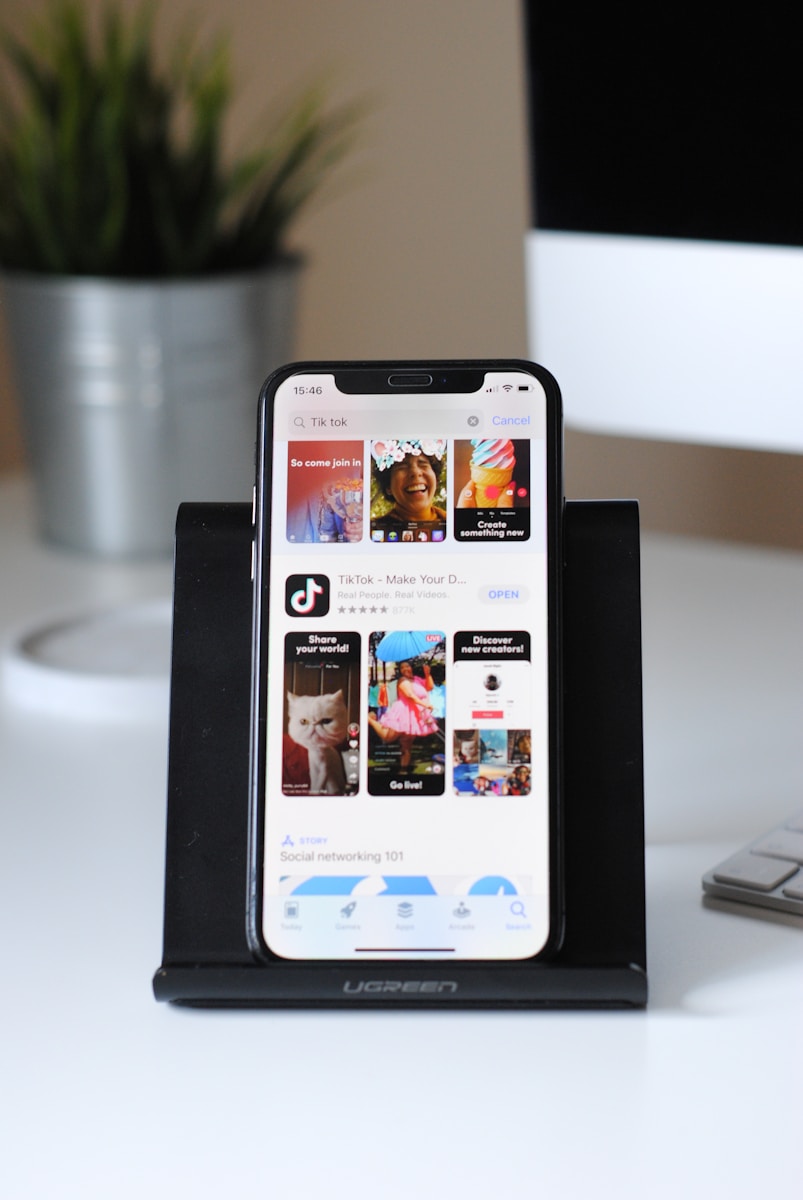
Understanding Social Media Listening and Monitoring
In the world of social media marketing, social media listening and monitoring play a crucial role in helping businesses understand and engage with their audience. These practices allow brands to gain valuable insights and stay informed about conversations happening on social media platforms. Let’s explore what social media listening is and why social media monitoring is important.
What is Social Media Listening?
Social media listening is the process of monitoring social media channels for mentions of your brand, competitor brands, and related keywords. It involves tracking and analyzing conversations, posts, comments, and other forms of user-generated content to gain a deeper understanding of customer sentiment, pain points, and feedback on various topics (Hootsuite).
By actively listening to what customers are saying, businesses can uncover valuable insights about industry trends, customer preferences, and frustrations with both their own products and competitors’ products. This information can inform product development, marketing strategies, and customer service efforts, ultimately helping businesses meet and exceed customer expectations (Hootsuite).
The Importance of Social Media Monitoring
Social media monitoring is closely related to social media listening and involves keeping a watchful eye on social media platforms for specific mentions, keywords, or hashtags. The goal is to identify and analyze conversations that are relevant to the brand or industry.
Effective social media monitoring allows businesses to:
- Gain customer insights and feedback: By monitoring social media conversations, businesses can understand audience preferences and needs, using the feedback to improve products and services, provide better customer service, and build loyalty.
- Manage brand reputation: By monitoring brand mentions and sentiment, businesses can proactively address any negative feedback or issues, protecting their brand reputation and maintaining a positive image.
- Detect and respond to crises: Social media monitoring enables businesses to quickly detect and respond to any potential crises or PR issues, allowing for timely and effective damage control.
- Receive real-time feedback on marketing initiatives: Monitoring social media allows businesses to gauge the response to their marketing campaigns, helping them make data-driven decisions and optimize their strategies.
- Identify influencers and brand advocates: By monitoring social media, businesses can identify individuals who are influential within their target audience and build relationships with them, leveraging their reach and influence.
- Conduct competitive analysis and benchmarking: Social media monitoring provides insights into competitors’ strategies, content, and customer interactions, allowing businesses to identify areas of opportunity and stay ahead in the market.
To effectively listen and monitor social media, there are various tools available. Some popular options include Hootsuite, Brandwatch, Sprout Social, Mention, and Talkwalker. These tools provide businesses with the capabilities to track and analyze social media data, helping them make informed decisions and drive their social media strategies forward.
By leveraging social media listening and monitoring, businesses can gain a competitive edge, understand their audience better, and build stronger relationships with customers. It is an essential practice for any brand or marketer looking to succeed in the dynamic world of social media marketing.
Benefits of Social Media Listening and Monitoring
In the fast-paced world of social media, social media listening and monitoring has become an essential practice for businesses of all sizes. By actively engaging in social media listening and monitoring, businesses can gain valuable insights, manage their brand reputation, detect and respond to crises, receive real-time feedback on marketing initiatives, identify influencers and brand advocates, as well as perform competitive analysis and benchmarking. Let’s explore these benefits in more detail:
Customer Insights and Feedback
Social media listening and monitoring enable businesses to understand their audience better by gathering insights into their preferences, opinions, and sentiments. This feedback can be used to improve products, enhance customer service, and build loyalty. By analyzing the conversations happening on social media platforms, businesses can identify trends, pain points, and emerging needs, enabling them to tailor their offerings to meet customer expectations.
Brand Reputation Management
Maintaining a positive brand reputation is crucial in the digital age. Social media monitoring allows businesses to track mentions of their brand, products, or services in real-time. By staying on top of these conversations, businesses can address any negative feedback, respond promptly to customer complaints or issues, and manage potential crises effectively. Taking proactive steps to manage and protect their brand reputation helps businesses build trust and credibility with their audience.
Crisis Detection and Response
Social media can be a breeding ground for potential crises. By actively monitoring social media channels, businesses can identify early warning signs, such as negative sentiment, viral complaints, or emerging controversies. This allows them to respond swiftly and appropriately, mitigating the impact of a crisis and protecting their brand’s reputation. Having a robust crisis response strategy in place, informed by social media listening, is essential for businesses in today’s digital landscape.
Real-Time Feedback on Marketing Initiatives
Social media provides a real-time feedback loop for businesses to gauge the effectiveness of their marketing initiatives. By monitoring social media conversations, businesses can quickly assess customer reactions to new product launches, ad campaigns, and promotions. This feedback allows them to make data-driven decisions, optimize their marketing strategies, and make adjustments or improvements based on customer sentiment and preferences.
Identifying Influencers and Brand Advocates
Social media listening and monitoring enable businesses to identify influential individuals and brand advocates within their target audience. By analyzing social media conversations, businesses can identify users who are actively engaging with their brand, sharing positive experiences, and advocating for their products or services. Collaborating with these influencers and brand advocates can help amplify marketing messages, extend reach, and increase brand awareness.
Competitive Analysis and Benchmarking
Keeping a close eye on competitors is essential in any industry. Social media listening and monitoring provide businesses with valuable insights into their competitors’ strategies, campaigns, and customer interactions. By analyzing competitor social media activities, businesses can identify trends, benchmark their performance, and gain a competitive edge. This information can inform their own marketing initiatives and help them differentiate themselves in the market.
By leveraging the power of social media listening and monitoring, businesses can tap into the vast amount of data and conversations happening on social media platforms. This valuable information empowers businesses to make informed decisions, tailor their strategies, and build stronger connections with their audience. To effectively harness these benefits, businesses can utilize various social media listening and monitoring tools such as Hootsuite, Brandwatch, Sprout Social, Mention, and Talkwalker.
Tools for Social Media Listening and Monitoring
To effectively engage in social media listening and monitoring, it’s essential to utilize the right tools that can help you gather insights, track conversations, and analyze data. Here are five popular tools for social media listening and monitoring:
Hootsuite
Hootsuite is a comprehensive social media management platform that offers powerful monitoring capabilities. It allows you to monitor all major social media platforms and provides customizable search streams to monitor any social platform based on keywords, hashtags, locations, and specific users. With Hootsuite, you can effectively track conversations, engage with your audience, and measure the impact of your social media efforts.
Brandwatch
Brandwatch is a robust social listening tool that enables businesses to monitor and analyze online conversations about their brand, competitors, and industry. It provides real-time insights and advanced analytics to help businesses make data-driven decisions. With Brandwatch, you can gain a deep understanding of your audience, track sentiment, identify emerging trends, and measure the effectiveness of your marketing campaigns.
Sprout Social
Sprout Social is a comprehensive social media management platform that includes social listening capabilities. It allows businesses to monitor brand mentions, track industry trends, and analyze customer sentiment. With Sprout Social, you can streamline your social media workflow, engage with your audience, and gain valuable insights to enhance your social media strategy.
Mention
Mention is a social media monitoring tool that helps businesses track brand mentions, monitor competitor activities, and stay informed about industry trends. It provides real-time alerts and customizable reports, allowing you to stay on top of the conversations that matter most to your brand. With Mention, you can proactively manage your online reputation and identify opportunities for engagement and growth.
Talkwalker
Talkwalker is an AI-powered social listening and analytics platform that provides businesses with valuable insights into online conversations. It offers real-time monitoring, sentiment analysis, and competitive benchmarking. Talkwalker empowers businesses to understand their audience, measure the impact of their social media campaigns, and make data-driven decisions to drive their social media strategy forward.
By utilizing these tools, businesses can effectively monitor social media platforms, track brand mentions, analyze audience sentiment, and gain valuable insights into their online presence. Each tool offers unique features and functionalities, so it’s important to choose the one that aligns with your specific needs and objectives. Keep in mind that effective social media listening and monitoring require not only the right tools but also a well-defined strategy and continuous refinement to stay ahead in the ever-evolving digital landscape.
Best Practices for Effective Social Media Listening and Monitoring
To make the most of social media listening and monitoring, it is essential to follow best practices that ensure accurate data analysis and effective action. Here are some key practices to consider:
Define Your Objectives and Key Metrics
Before diving into social media listening and monitoring, it’s crucial to clearly define your objectives. Determine what you want to achieve through this process, whether it’s gaining customer insights, managing your brand reputation, or tracking the success of marketing campaigns. By establishing specific objectives, you can tailor your listening and monitoring efforts accordingly.
Identify key metrics that align with your objectives. These metrics could include sentiment analysis, engagement rates, reach, or even customer sentiment towards your competitors. Defining these metrics will help you measure and track your progress over time.
Set Up Relevant Monitoring Streams
To effectively listen and monitor social media conversations, set up relevant monitoring streams. This involves selecting the right keywords, hashtags, and mentions to track. Consider using social media monitoring tools like Hootsuite, Brandwatch, Sprout Social, Mention, or Talkwalker (source). These tools allow you to track conversations across various social media platforms and gather insights in real-time.
By monitoring relevant streams, you can focus on the conversations that matter most to your brand. This enables you to gain deeper insights into customer preferences, opinions, and sentiments, empowering you to make informed decisions based on real-time data.
Analyze and Interpret Data
Collecting data is one thing, but analyzing and interpreting it correctly is where the true value lies. Use social media analytics tools to analyze the data gathered from your monitoring efforts. These tools can provide valuable insights into engagement levels, sentiment trends, audience demographics, and more.
Take the time to interpret the data and identify patterns or trends. Look for common themes, sentiment shifts, or emerging topics that can inform your marketing strategies. By understanding the data, you can uncover actionable insights that drive meaningful changes within your organization.
Take Action and Respond Promptly
Social media listening and monitoring should not be a passive process. It’s essential to take action based on the insights you gather. When you come across customer feedback, respond promptly and appropriately. Addressing concerns, answering questions, or expressing gratitude for positive feedback can enhance your brand’s reputation and build stronger customer relationships.
In addition to responding directly to customers, consider leveraging the insights gained to improve your overall marketing strategies. Adjust your campaigns, refine your messaging, or develop new products based on customer feedback and real-time data.
Continuously Refine and Improve Your Strategy
Social media listening and monitoring is an ongoing process. It’s important to continuously refine and improve your strategy as you gather more data and insights. Regularly evaluate the effectiveness of your monitoring streams and adjust them as needed. Stay updated on the latest social media trends, tools, and techniques to ensure you are utilizing the most effective methods for listening and monitoring.
By continuously refining your strategy, you can stay ahead of the curve, adapt to changing customer preferences, and optimize your social media efforts for maximum impact.
By following these best practices, you can harness the power of social media listening and monitoring to gain valuable insights, manage your brand reputation, respond effectively to customer feedback, and stay ahead of your competitors. Implementing these practices will help you make informed decisions, drive meaningful improvements, and achieve your social media objectives.










